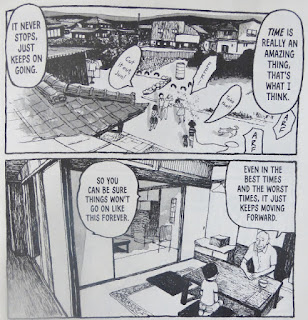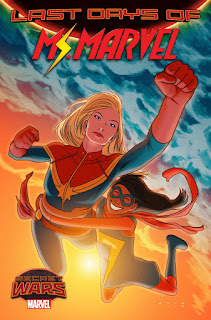Creator: Hugo Pratt
There is a huge problem when trying to write about a comic strip that is almost legendary within the industry. How do you approach something that is so highly regarded? How do you find something new to say about it? I don't have an answer to any of those questions so my solution is to just jump right in and offer my opinions, for what they are worth, on the second of the IDW Corto Maltese collections, Beyond the Windy Isles.
A little background on this first. Beyond the Windy Isles is actually the fourth in the series but IDW decided to start these collections with the third volume, Under the Sign of Capricorn. In an interview with the editor Dean Mulaney on the Comic Book Resources website
here, he reveals that the reason for this is that it is with the third book that he developed the themes and characters that recur throughout. Having never read this series before I cannot speculate on whether this is a good decision or not. We'll only know when all twelve have been published, but I certainly didn't feel like I was missing anything when I read the Capricorn volume. Indeed it has been a strength of both the books released so far that you could pick either up and enjoy the stories inside.
So what of the book itself? Well physically it is a lovely object. The cover is a nice heavy card with a nice little picture of Corto Maltese against a map of the Caribbean. Inside the front cover is an informative introduction to book with actual period photographs of one of the locations featured in the stories. Opening this out displays a beautifully reproduced old map of the Caribbean. Solid to hold, printed on high quality paper and with a shot biography of Hugo Pratt in the inside back cover, initial impressions when you first pick this up and leaf through it are high. This feels like a quality book.

The packaging is all very well but what really matters is the quality of the stories. It's not much use a book feeling high quality only to feature strips that don't live up to the presentation. Fortunately each of the five tales are wonderful and an improvement on Under the Sign of Capricorn. The strips in that earlier volume where not poor by any stretch of the imagination, but these just seem a step up. Maybe it's just that I'm now more familiar with the Corto Maltese world but I was completely engrossed in these from page one.
There is a strong theme of betrayal that seems to run through the first four chapters here. The first story, Mushroom Head, deals with Corto Maltese regaining his lost memory but also manages to include betrayal and racial identity confusion. The second chapter, Banana Conga, opens with an incredibly effective page showing mainly two gun barrels with the wielders only present in their dialogue. We're then into the politics of a small island with double-crosses galore, all over a suitcase that everybody wants. In Voodoo for the President we are again embroiled in the corrupt politics of an island state, and are treated to the welcome return of two characters we first met in Capricorn. Sweet Dream Lagoon once more deals with the subject of betrayal as we are introduced to the disease induced hallucinations and dreams of a World War 1 desserter, in probably the most touching story in the collection, although that is possibly rivalled by the final story, A Tale of Two Grandfathers. In this we see the journey to recover a European boy from an island tribe where he has grown up, and asks the question of whether European “civilisation” is the best fit for everybody and what we should have been imposing on the world.

Words cannot really convey just what a job Hugo Pratt does in telling these stories. There is an elegance to his storytelling that is almost the polar opposite of the Jack Kirby over the top, in your face action style. Not that one is superior to the other – they are just different approaches which fit the different stories. In cinematic terms it's a bit like the difference between a Luc Besson directed adventure film and a Stephen Spielberg directed one. The influence of Milton Caniff shines through, as does a strong feeling of his contemporary Alex Toth in the work. Each page feels well balanced, and the action is captured clearly. There's no ambiguity here, no wondering what is going on, or who is shooting at whom. There is no elaborate page design on display either, with all sorts of different shaped panels laid out in dramatic arrangements. This is a strict grid structure. Nevertheless Pratt manages to convey the drama in each scene by what the objects he chooses and the angles he draws them from. The aforementioned opening to chapter two is a case in point.
Corto Maltese is a strip that lives up to its status, and IDW are doing a fine job in their packaging of this very special material. Roll on the release of the next volume, Celtic Tales.























